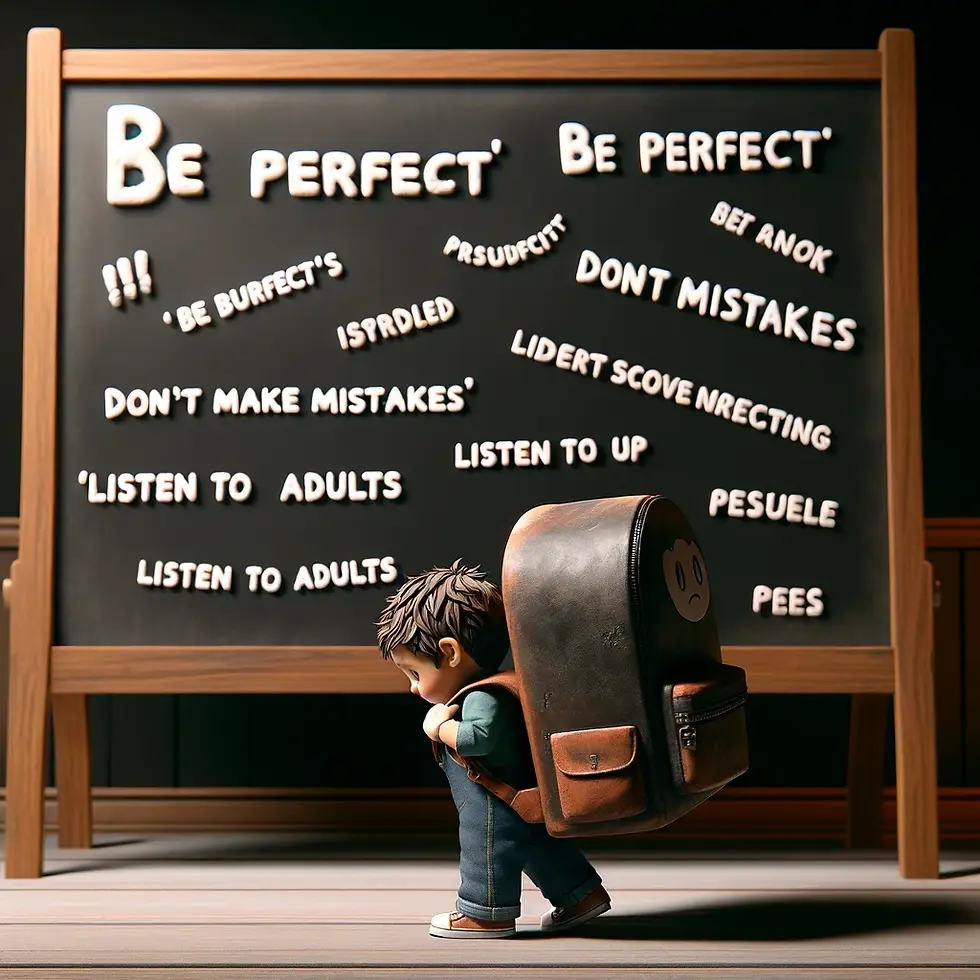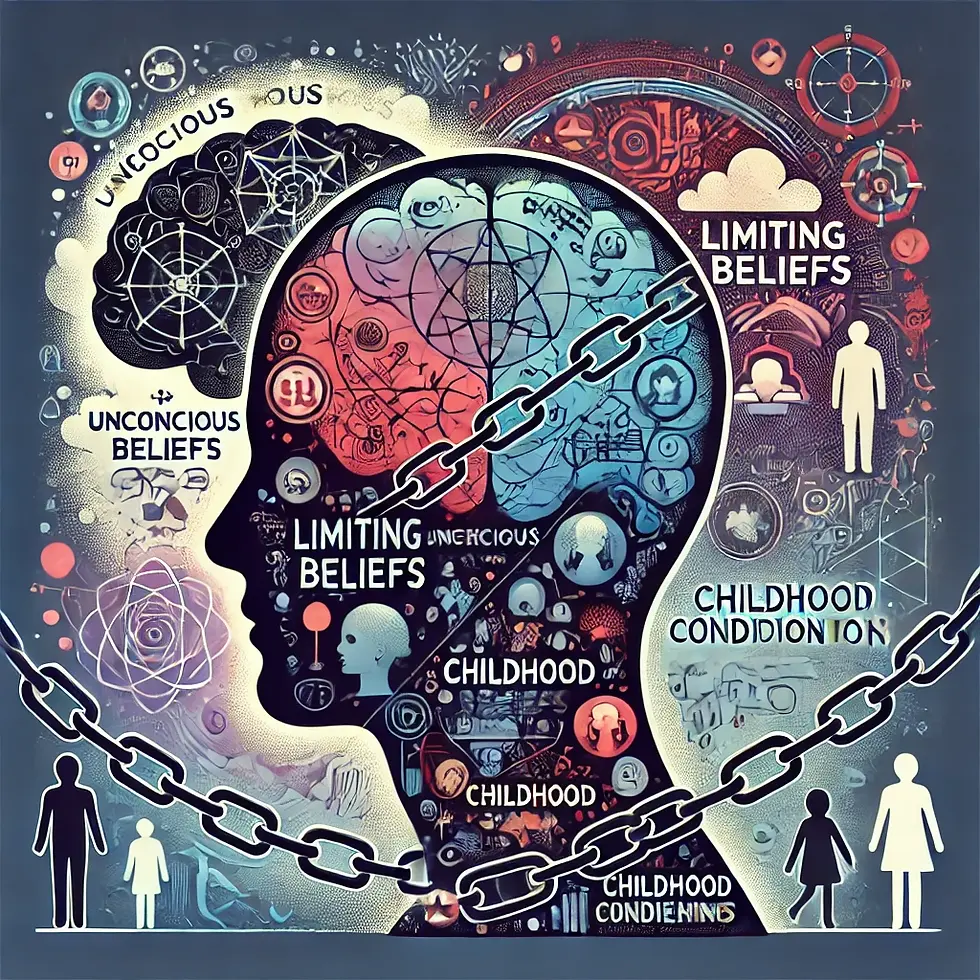Self-Sabotage Mechanisms: A Dive into the Unconscious, Limiting Beliefs, and Childhood Conditioning
- BIOTECH-EVOLVING
- Aug 28, 2024
- 3 min read

Self-sabotage is a complex phenomenon that can be detrimental to the achievement of our personal and professional goals.

This process, often unconscious, manifests itself through behaviors or thoughts that prevent us from achieving our aspirations. To understand self-sabotage, it is essential to explore its roots in the unconscious, limiting beliefs and the conditioning we have undergone during childhood.
This article provides an in-depth analysis of these interrelated concepts, explaining how they manifest and influence our adult lives.
1. The Unconscious: The Hidden Source of Self-Sabotage

The unconscious is a part of our psyche that is beyond our conscious control. According to Sigmund Freud, the unconscious contains repressed memories, desires, and fears that can influence our behavior without us being aware of it. These unconscious elements can sometimes conflict with our conscious aspirations, creating self-sabotage patterns.

Unconscious self-sabotage often manifests itself in the form of procrastination, self-deprecation, or self-destructive behaviors. For example, a person may want to succeed professionally, but their unconscious mind, conditioned by a fear of failure or success, may cause them to avoid opportunities that would allow them to advance.
2. Limiting Beliefs: Internal Obstacles
Limiting beliefs are deeply held beliefs that restrict our potential and influence our behavior.

They are often formed during childhood, through experiences, education, and implicit or explicit messages received from authority figures, such as parents and teachers. For example, a person who heard frequently during childhood that they were “not smart enough” might develop the limiting belief that they do not deserve academic or professional success.
This limiting belief then becomes a filter through which she interprets her experiences, causing her to self-sabotage to avoid confronting the dissonance between her desire to succeed and her belief that she is incapable of doing so.
3. Child Conditioning: The Genesis of Self-Sabotage
Childhood conditioning plays a crucial role in shaping the unconscious and limiting beliefs.

Conditioning can be defined as the process by which behaviors or beliefs are instilled in a child through repetition and reinforcement.
This process can be conscious, through direct education, or unconscious, through observation of adults' behaviors and attitudes.
For example, a child who sees his or her parents failing to achieve their goals or expressing negative beliefs about success may internalize these attitudes. Thus, even as an adult, that person may unconsciously repeat these patterns, perpetuating self-sabotaging behaviors that sabotage his or her efforts to succeed.
4. The Interaction between the Unconscious, Limiting Beliefs and Conditioning
The interaction between the unconscious, limiting beliefs, and childhood conditioning is complex and interdependent. Conditioning during childhood shapes the unconscious, depositing limiting beliefs that can later trigger self-sabotaging behaviors.

These behaviors are often manifestations of internal conflicts between a person's conscious desires and conflicting messages rooted in the unconscious.
Consider the example of someone who wants to start their own business. If that person has been conditioned to believe that financial security takes priority over risk-taking, they may unconsciously sabotage their efforts by not taking the necessary steps to succeed.
This self-sabotage can manifest itself through procrastination, constant doubts, or a lack of perseverance.
5. Overcoming Self-Sabotage: Towards Positive Transformation
Recognizing and overcoming self-sabotage requires deep introspective work, often with the help of a therapist or coach.

The first step is to identify limiting beliefs and self-sabotaging behaviors.

Once identified, it is possible to reprogram the unconscious by replacing limiting beliefs with positive convictions and adopting constructive behaviors.

Cognitive behavioral therapy (CBT), hypnosis, and mindfulness are some of the techniques used to change self-sabotage patterns.

The transformation process takes time and persistence, but it is possible to undo childhood conditioning and unlock the potential for success.
Conclusion

Self-sabotage is a phenomenon that takes root in the depths of the unconscious, shaped by limiting beliefs and conditioning during childhood. Understanding these mechanisms allows us to better understand them and work to overcome them. By changing our limiting beliefs and reconditioning our unconscious, we can unleash our full potential and move towards a more fulfilling and successful life.






留言